What to plant next to roses?
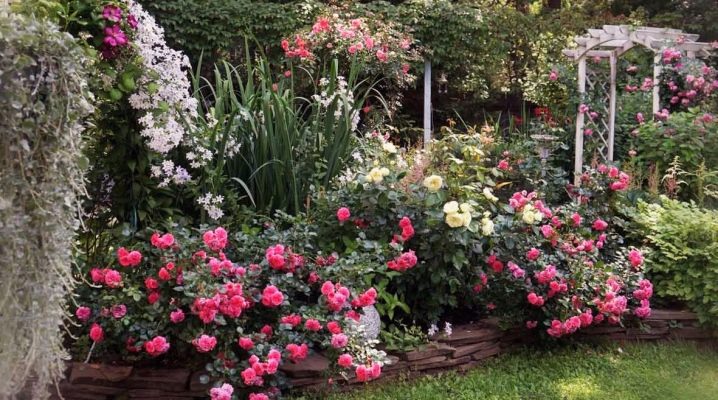
Rose is one of the most sought-after flowers with countless varieties grown in many regions of the country. Gardeners are often interested in what can be planted next to roses to speed up and improve their growth and flowering? It is worth considering this issue in more detail.
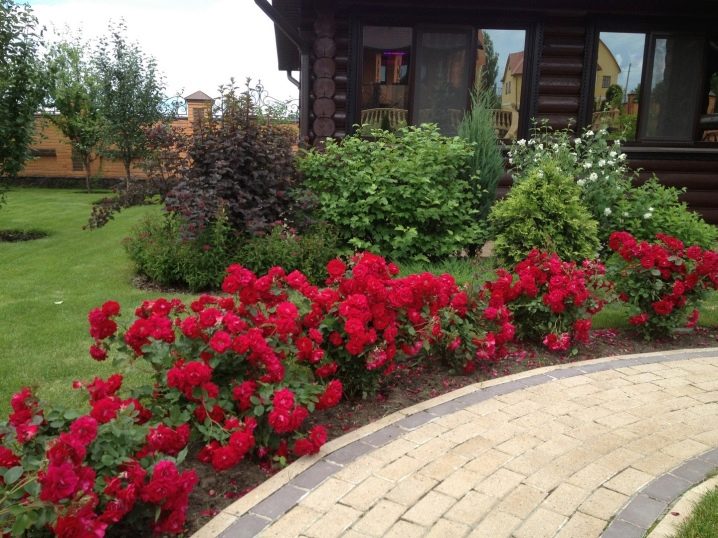
Best and neutral options
So, what to plant next to roses so that they feel comfortable and can quickly take root? There are several of the most vibrant and queen-suitable crop flowers that can be ideal companions for a climbing or bush rose.
Clematis
Clematis is a perennial flower, among the characteristics of which are the following:
- type of - shrub or liana;
- flowers - large, up to 15 cm in diameter with lanceolate petals, mainly pink, white, blue or purple shades;
- escapes - rapidly growing.
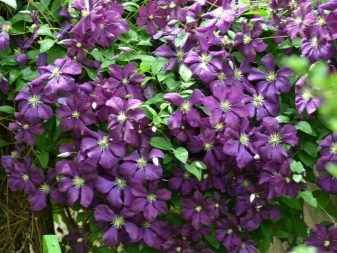
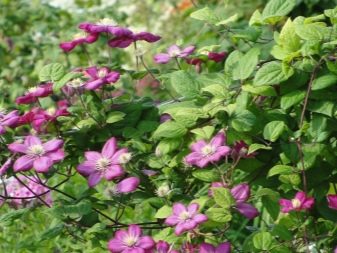
The peculiarity of clematis is in a root system similar to roses, which prefers to be located closer to the surface. Plants are recommended to be planted at a distance of 50-60 cm from each other, to provide a comfortable neighborhood and prevent crops from fighting for nutrients.
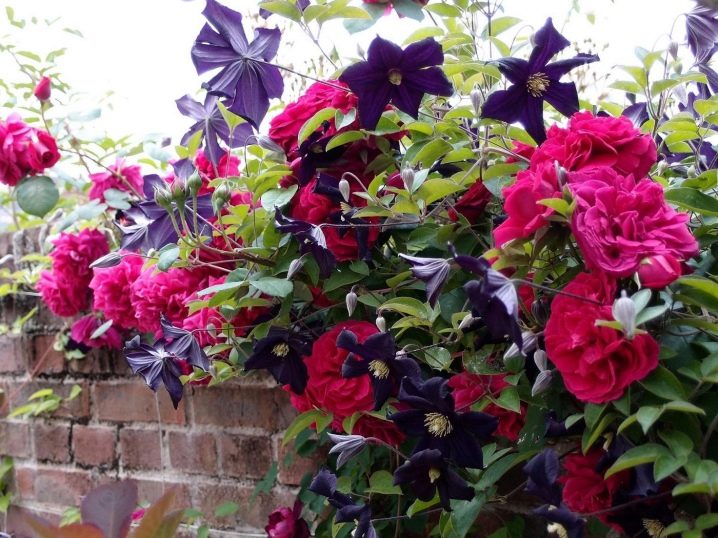
Among other things, clematis and roses prefer elaborate drainage and do not like the proximity of groundwater. Both crops should be planted in sunny, draft-free areas.
Roses among the variety of clematis are especially happy variety "zhakman" with its characteristic large flowers that emit a pleasant aroma. The maximum size of a clematis bud reaches 15 cm in diameter.
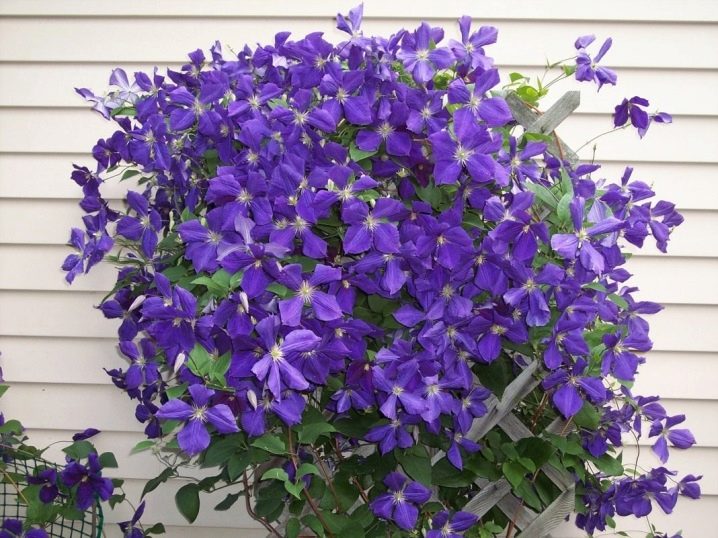
A feature of clematis is its excessively long shoots, which require additional fixation on trellises or special arches. If a transplant is required, then it is better to give preference to planting young crops next to rooted roses. Otherwise, clematis will be able to destroy a beautiful flower.
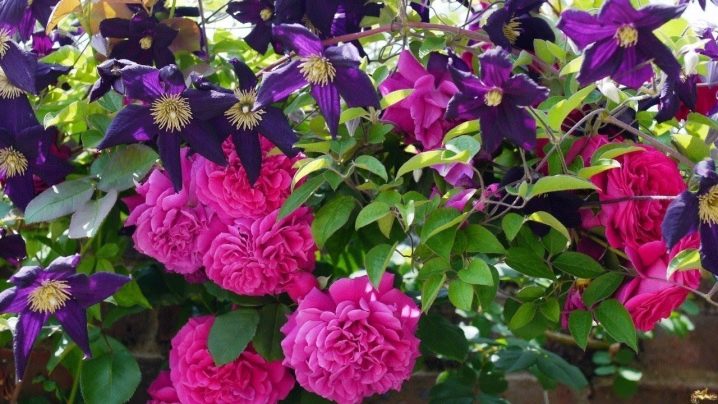
Lavender
The plant has increased resistance to harsh growing conditions, so it quickly takes root even in practically infertile soils. An evergreen perennial plant is considered one of the best neighbors for a rose. Among the features of lavender:
- rich and pleasant aroma;
- inflorescences of light lilac color;
- height - up to 40 cm;
- over 30 varieties.
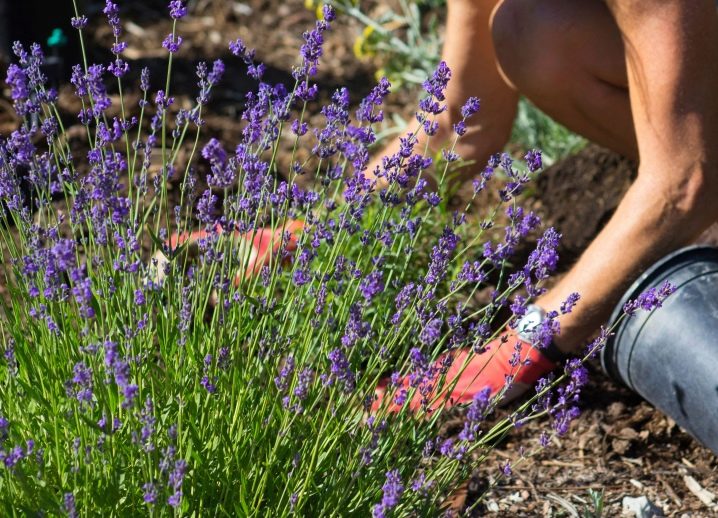
Among the most common hybrids, there are English lavender with its characteristic narrow leaves.
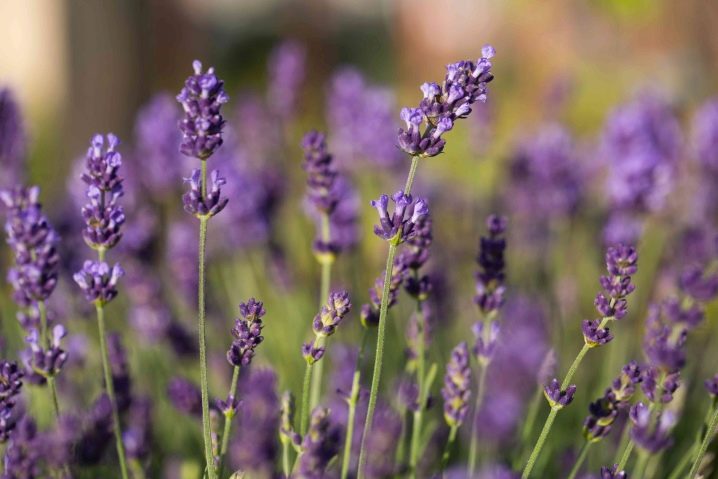
The flower is quite sensitive to the sun, and perceives a long absence of sunlight negatively. Under favorable growing conditions, it produces flowers from early spring to the first frost in the fall.
To maintain its attractive appearance, it is recommended to prune lavender regularly to form a crown.
With the help of lavender, it is possible to ensure not only the effective growth of roses, but also to achieve the creation of a unique floral composition, saturated with pleasant and delicate shades. Usually lavender is planted near tall roses, as well as in the environment of climbing varieties. A composition in which rose bushes are 2 times higher than lavender inflorescences will look especially attractive.
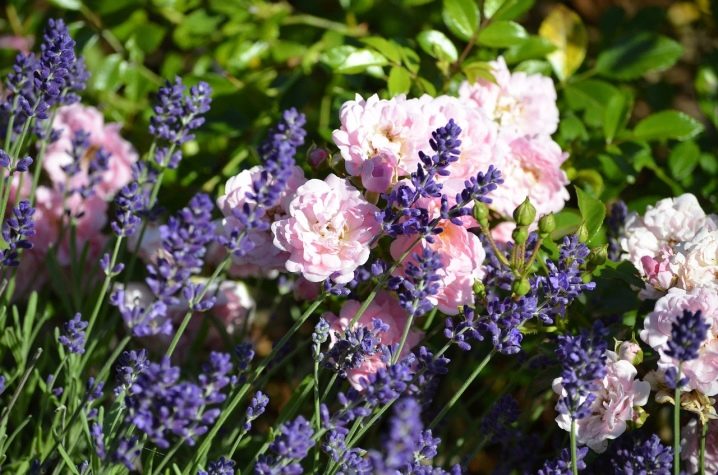
Lobularia
It is a fairly compact plant that looks good next to a rose. Form - small herbaceous bushes up to 30 cm high.During the flowering period, the lobularia is covered with small flowers of white or cherry color. Some varieties produce flowers with dark petals. In landscape design, the plant is used to decorate the bottom row of a flower garden with roses with it.
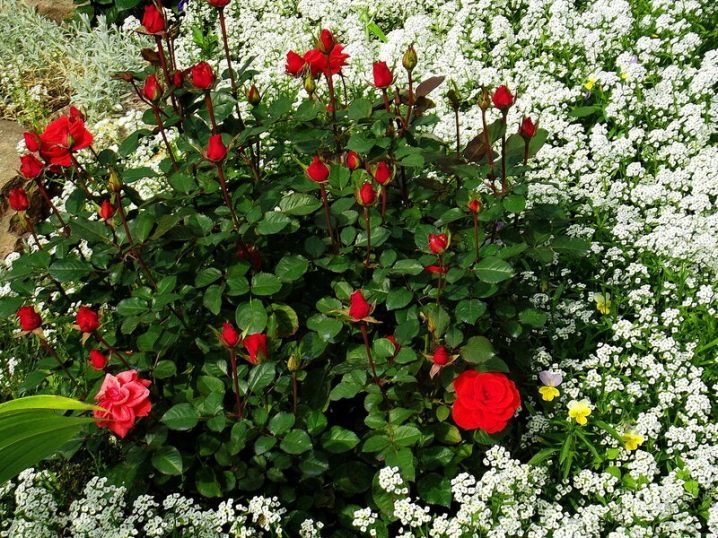
The main advantage of lobularia is quick survival in any conditions, so the flower becomes an ideal neighbor for roses.... It is recommended to plant a crop 20-30 cm from the queen of flowers so that the dense thickets of Lobularia do not block the air with pink buds and do not cause illness for them. The second advantage of lobularia is in the absence of competition for useful components in the soil, so the rose may not worry about the lack of nutrients.
Lobularia is an annual plant that is not particularly demanding for watering and care. However, gardeners advise taking care of regular pruning of the plant to form a crown and achieve a lush, attractive flowering.
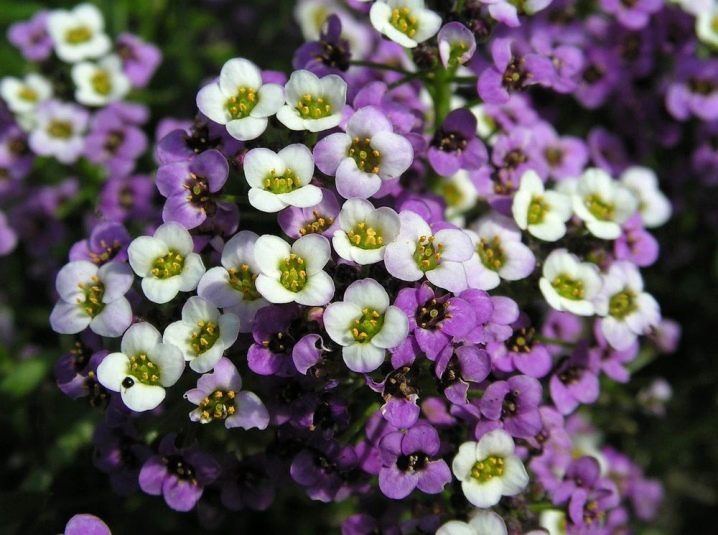
Delphinium
The main feature of the delphinium is its tall design, which allows you to achieve original flower arrangements in combination with roses. Perennial is often used in landscape design as a background, as well as for placing key accents. Among the main characteristics:
- flowering duration - 30 days;
- height - up to 80 cm;
- petals - blue, red, purple and white.
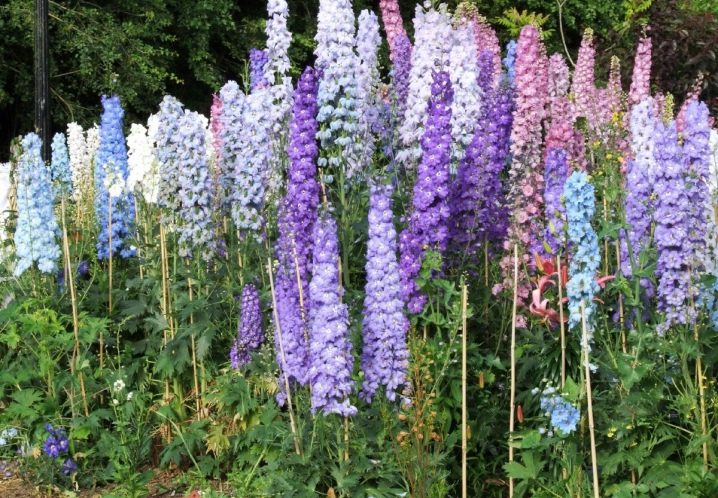
A tall plant easily fills the voids in the composition, it easily takes root in almost any conditions. Delphinium will become a bright contrast when planting with roses and will not in any way suppress the growth of flowers and will not overshadow their attractiveness. Such a duet is considered one of the best, but you need to competently approach the formation of a bush and proper care of the flower.
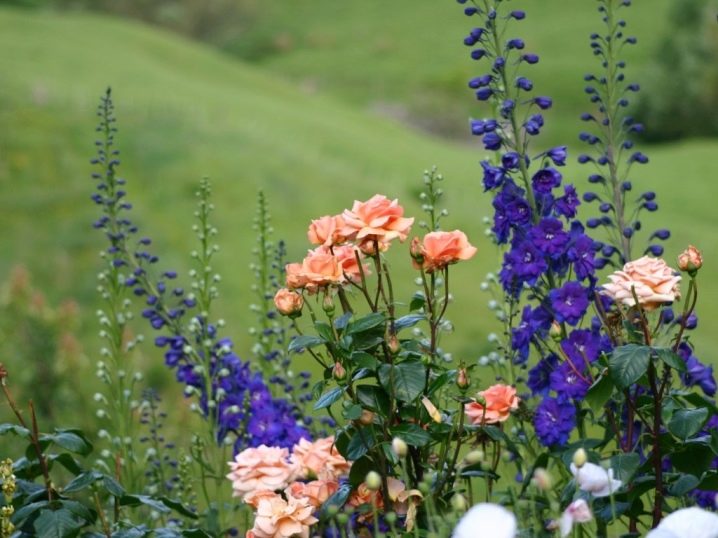
Lobelia
Lobelia is a plant that belongs to the bellflower family and is a ground cover crop. Main characteristics:
- flowers - small, fan-shaped petals;
- duration flowering - from the beginning of summer to the end of September;
- shade of buds - pale lilac, blue or white;
- sheet plates - dark green, medium size.
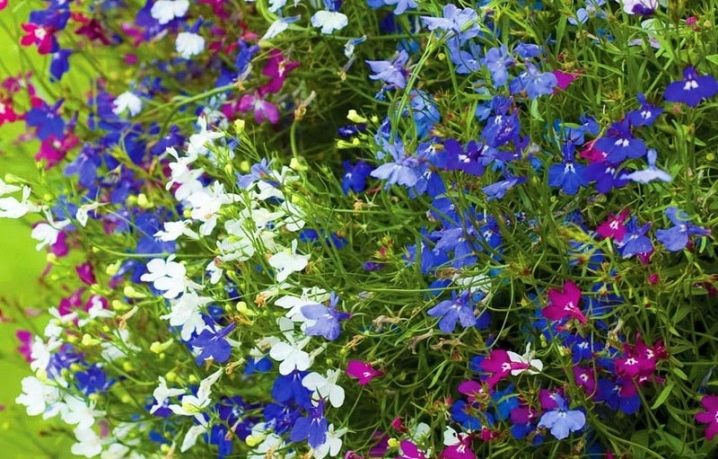
Lobelia is suitable for planting in open ground, grows well both in the sun and in the shade. Therefore, this culture will become a good neighbor for roses.
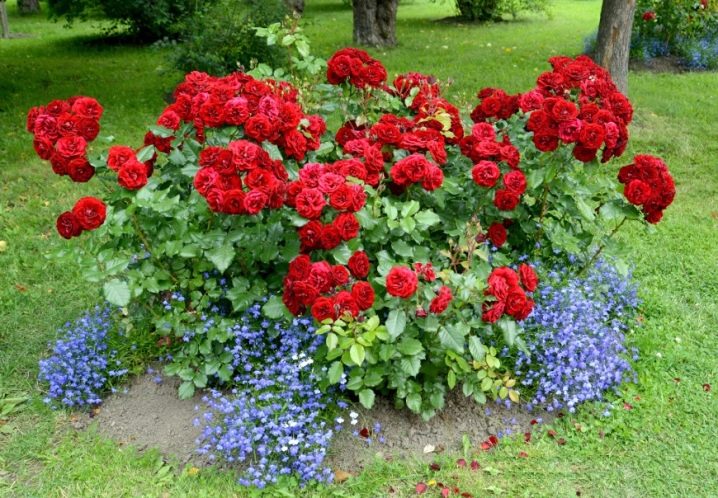
When choosing lobelia, preference should be given to undersized varieties so that they do not overlap the rose bushes.
Other
Low-growing conifers go well with a rose. Landscape designers advise planting such plants at the foot of the flower bed where the queen of flowers grows. So, for example, you can plant conifers such as juniper next to a rose, it is better to choose creeping species. A worthy place will be taken next to the host or flowers such as:
- chrysanthemums;
- phlox;
- irises.
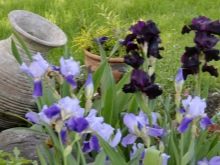
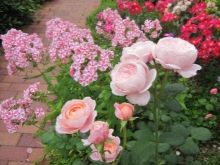
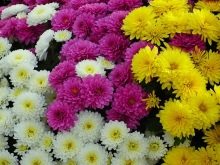
In addition to these crops, you can plant other plants next to the rose.... For example, geraniums or marigolds, which will scare off pests and thereby protect roses from the invasion of a variety of insects that can destroy the bushes.


You can also plant low plants near the rose, which will prevent the development of various diseases. It will look especially beautiful: bells, pansies, mint, anise and spurge.
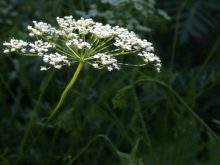

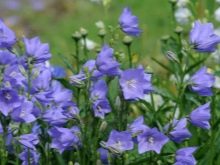
Worst plants
Not all cultures are capable of becoming friends for roses. There are those that are not recommended to be planted next to them.
- Dahlias... A plant with a fairly developed and powerful root system, which can easily overwhelm the nearby flowers with its superiority. Roses will surely lose this fight and will not be able to get the necessary supply of nutrients from the soil. Therefore, dahlias are unwanted neighbors for rose bushes.

- Peonies... The close proximity of peonies with roses will lead to a deterioration of the deciduous mass. Gradually, the plates will wither and fall off. In addition, peonies can disrupt air circulation, which will cause the development of a fungus - a serious disease that affects all elements of the rose bush.Finally, another reason not to plant peonies nearby is the release of a dangerous substance by the roots of plants, which slows down the growth and development of other crops nearby.

- Hydrangeas... They are flowering perennials that thrive in acidic soils. Unfortunately, such a substrate is dangerous for roses, so you should avoid being close to hydrangea when planting bushes. Otherwise, both plants will not get along with each other.
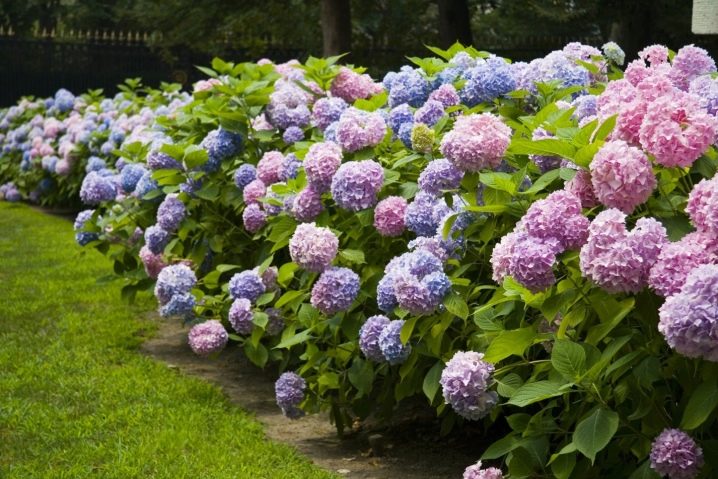
- Fern... While the two cultures can provide a unique blend, it is best for them not to grow nearby. The fern prefers shady places, and the rose grows mainly in sunny areas.
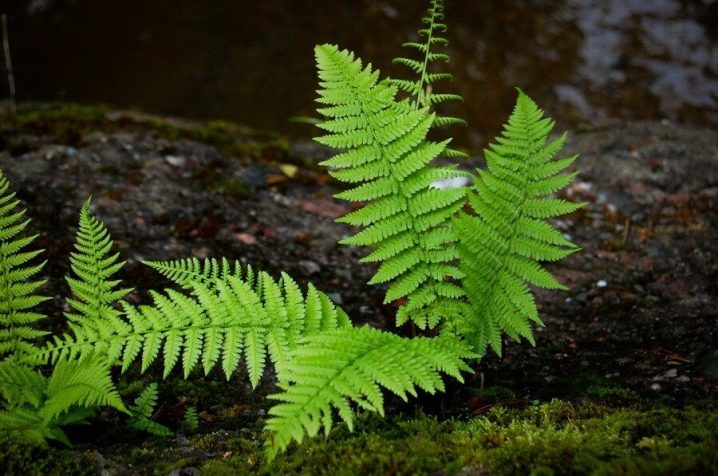
- Loosestrife... A perennial that pleases gardeners with pretty yellow flowers cannot become a good neighbor to a rose. The culture is growing rapidly and seeks to capture all the free space around.
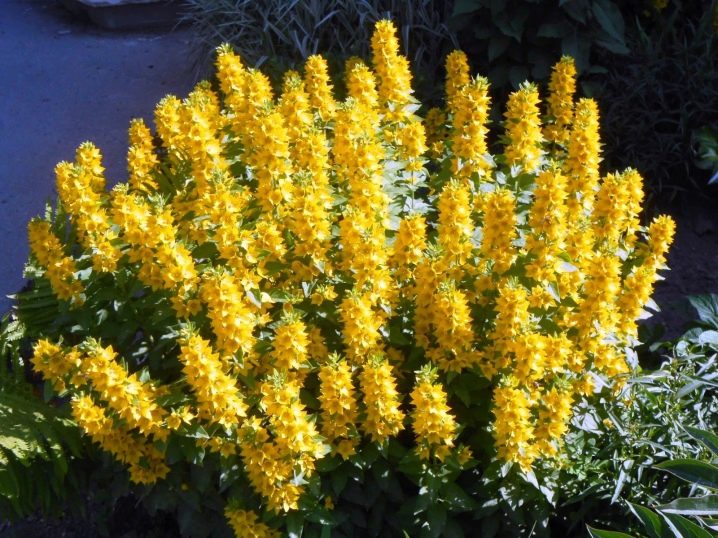
- Physostegia... A perennial shrub, whose height reaches 1.5 m, will simply overlap the rose and form a humid climate around itself in which the queen of flowers cannot grow and will quickly die.
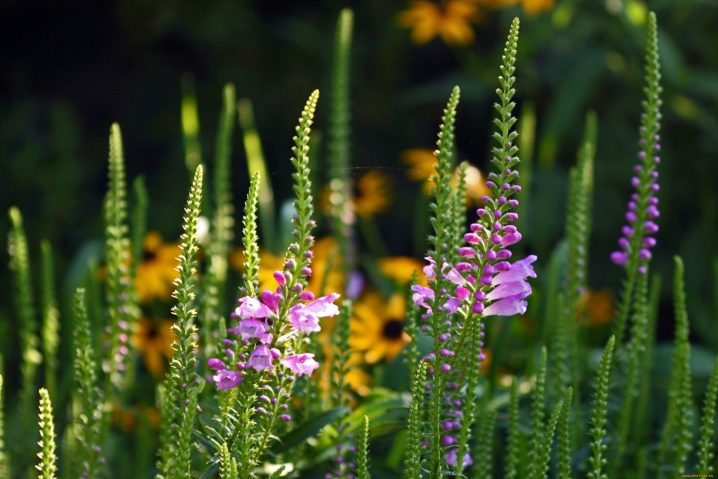
- Rhododendron... A popular flower that can be found in almost every garden. Quite a beautiful plant, but it is not recommended to plant it next to a rose. The species is quite aggressive and picky about growing conditions that are in no way suitable for rose bushes. If you plant both crops side by side, the rose will begin to rot after a while.
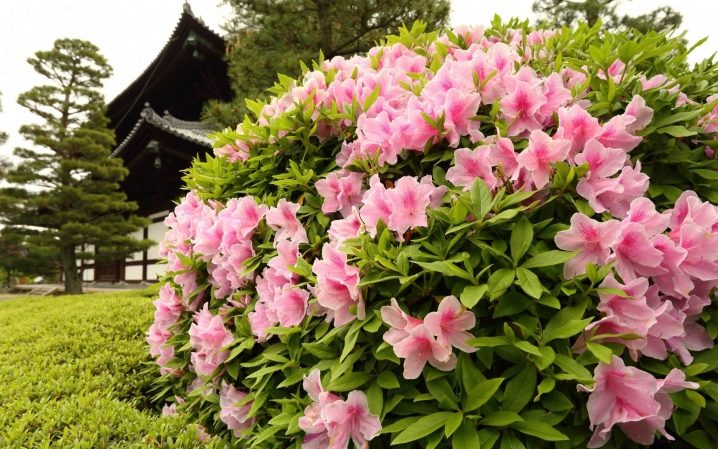
- Lilies... Flowers will quickly ruin, so plants cannot be placed close.

Compliance with the listed recommendations will help to avoid errors of incorrect distribution of colors over the site.
Will roses of different varieties get along?
Often gardeners, especially beginners, are interested in whether it is possible to plant roses of different varieties next to each other. The answer is yes, and it is better to have flowers of different shades nearby, for example, purple, yellow and orange bushes.
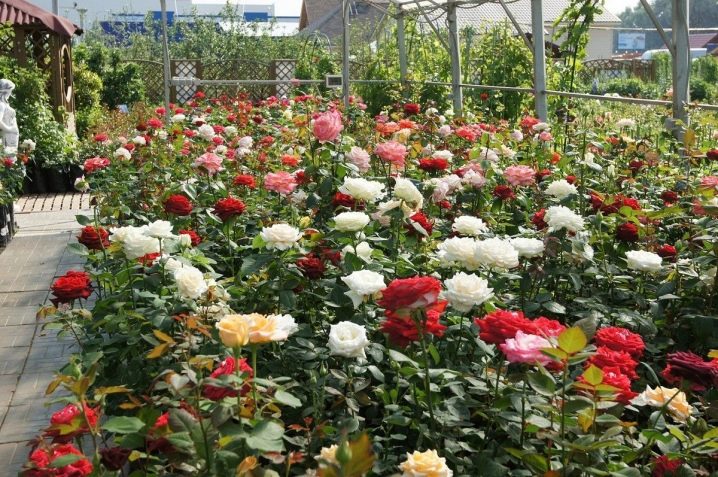
Interestingly, not all roses are combined with each other. For example, red flowers will get lost in such a variety.
An unusual solution would be to plant pink and blue roses next to each other. Other popular combinations:
- red with orange;
- cream with white;
- yellow with blue.

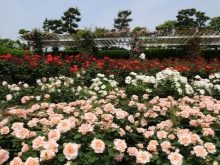

Experienced gardeners recommend that you give up trying to plant roses with buds of warm and cold shades next to each other. In general, roses do not affect each other in any way, do not disturb growth, well-being and attractive appearance. Therefore, if you wish, you can experiment with different varieties and shades.
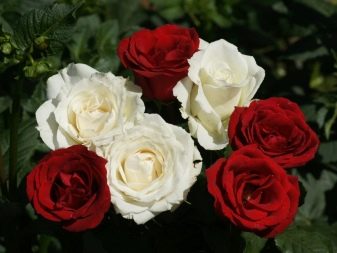
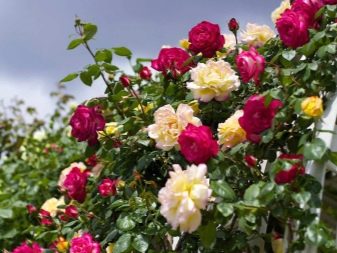
What should be considered when choosing?
A garden rose is a plant that is rather unstable to external influences. Therefore, it is important to take care of the favorable neighborhood of the bush with other crops in order to prevent its death from insects, diseases or even drafts. There are several key points to consider when choosing a neighbor.
- Garden roses will feel comfortable next to crops, whose roots do not claim extra water or nutrients.
- The plant should not actively grow in breadth or upward and try to occupy all the free space.
- The perfect combination would be a rose and a flower with an unusual aroma. Such plants are able to attract pollinating insects with their smell.
- The color of the neighbor's petals should be in harmony with the shade of the rosebuds, planted in a flowerbed, otherwise it will not be possible to get an attractive composition.
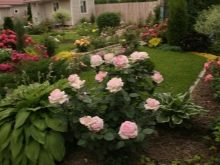
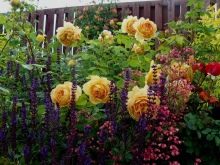
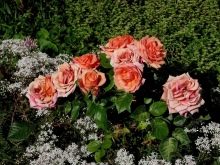
It is not difficult to find a neighbor for the queen of roses if you follow simple recommendations and take into account the advice of experienced gardeners. In principle, the plant takes root well and grows with many crops.
Beautiful examples
Before proceeding with the landing of various specimens, it is worthwhile to form a future flower bed scheme in advance and take into account the compatibility of plants... At the same time, it is important to make sure that the colors are combined with each other. This solution will help to make the garden more atmospheric and simplify the care of the vegetation.
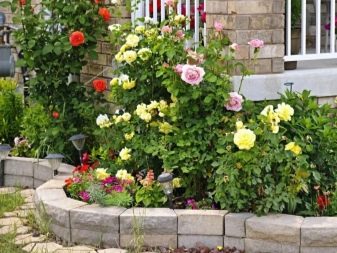
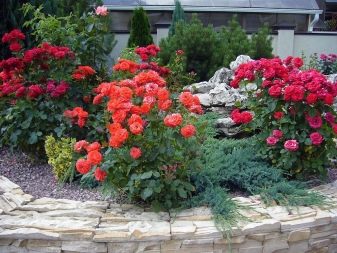
Placing plants in a flower bed doesn't really take long if you follow a simple algorithm.
- It is customary to plant tall plants in the background.
- In the middle, the main culture is planted - a rose.
- Various herbs are placed in the foreground.
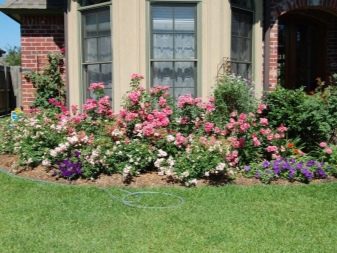
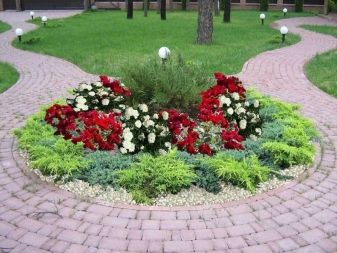
It is worth looking at a few examples to get the theory out in practice.
- The photo shows the most colorful version. Gardens are decorated in this way quite rarely, but in the summer season, flower beds with roses and other flowers look very attractive. At the same time, all crops are used that will not harm the flower in any way.
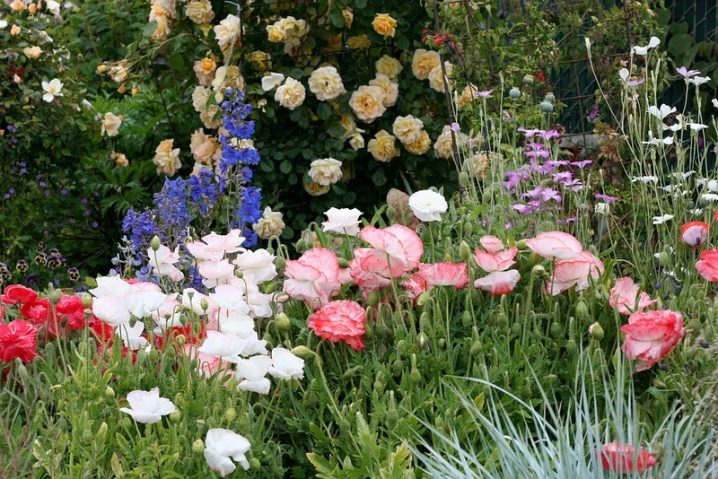
- The second option shows a delicate combination of cream rose and lavender.... You can also notice the planting of another variety of rose bushes nearby.
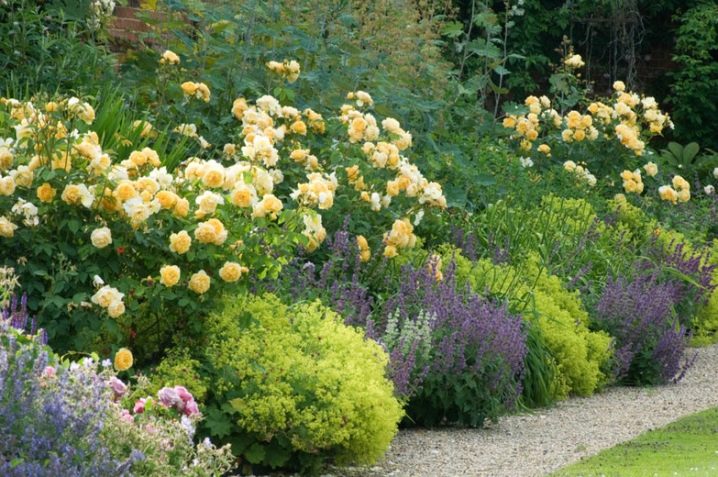
- Hedges and roses the perfect combination for decorating your garden. Both cultures get along well with each other.
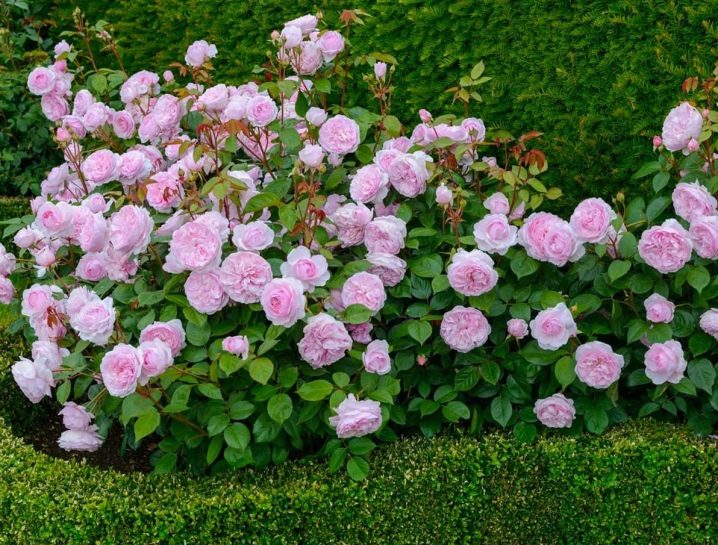
- And this is how the plantings of roses of various varieties look like... At the same time, the designer managed to find the optimal combination.
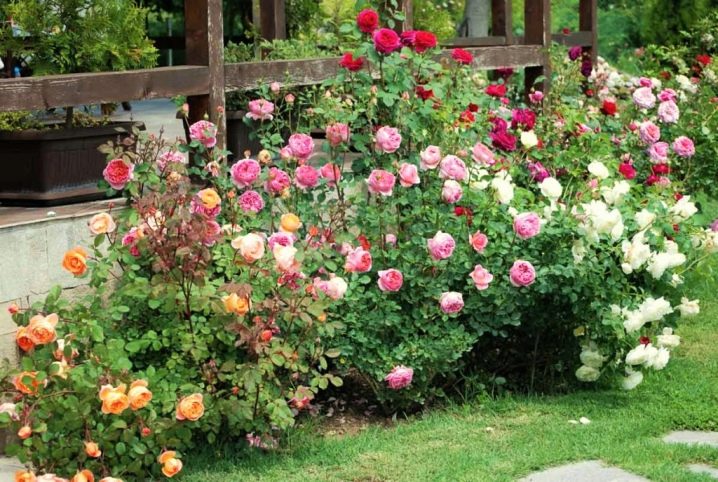

































































































The comment was sent successfully.